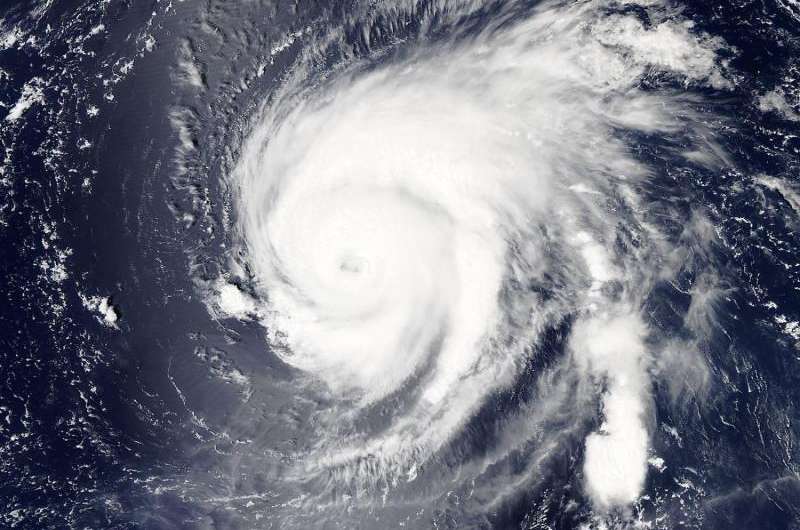NASA spots Kilo, now a typhoon in the Northwestern Pacific

Hurricane Kilo may have formed in the Central Pacific Ocean, but on September 1 it crossed the International Date Line, so it was classified as a typhoon. NASA's Aqua satellite spotted a clear eye in the Category 3 typhoon early on September 1.
Different Names, Different Locations
There are three different names for the same kinds of storm all depending on location.
Hurricanes, cyclones, and typhoons are all the same weather phenomenon. In the Atlantic and Northeastern Pacific Ocean, the term "hurricane" is used. The same type of storm in the Northwestern Pacific is called a "typhoon." In the South Pacific and Indian Ocean, they're known as "cyclones."
The International Date Line
The International Date Line lies to the west of Hawaii. It is an imaginary line on the surface of the Earth that stretches from the North to South Pole, and signifies a change in one calendar day. The "line" runs through the middle of the Pacific Ocean, roughly following the 180° line of longitude but zig-zags to pass around some territories and island groups. If traveling over the line, the date west of the line adds 24 hours, while east of the line subtracts 24 hours.
When Aqua passed over Kilo, the Moderate Resolution Imaging Spectroradiometer instrument captured a visible picture of the storm that showed it maintained a clear eye. The eye was surrounded by a thick band of powerful thunderstorms. Large bands of thunderstorms spiraled into the center from the northern and southern quadrants.
Where is Kilo Now?
At 0900 UTC (5 a.m. EDT), Typhoon Kilo had maximum sustained winds near 105 knots (120.8 mph/194.5 kph). It was centered near 22.9 North latitude and 179.6 West longitude. That puts the center about 802 nautical miles east-northeast of Wake Island. Kilo is moving to the north at 7 knots (8 mph/12.9 kph). Currently, Kilo poses no threat to land areas.
Kilo is forecast to move west and intensify to Category 4 storm again by September 4 with maximum sustained winds expected to reach 125 knots (143.8 mph/231.5 kph). Kilo is expected to maintain that intensity for a couple of days.
Provided by NASA's Goddard Space Flight Center



















